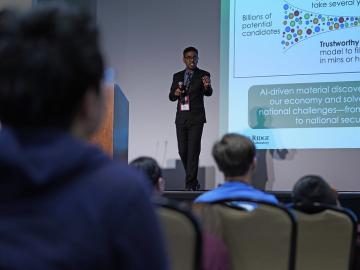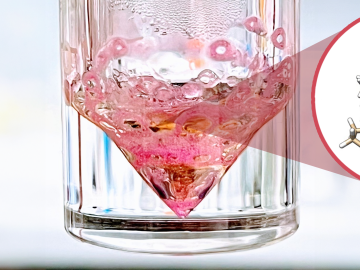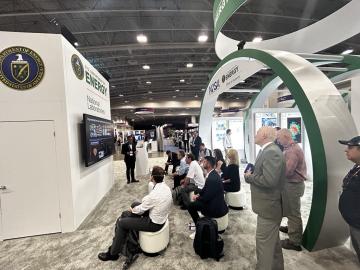Filter News
Area of Research
News Type
Date
News Topics
- 3-D Printing/Advanced Manufacturing (9)
- Advanced Reactors (3)
- Artificial Intelligence (22)
- Big Data (6)
- Bioenergy (9)
- Biology (11)
- Biomedical (5)
- Biotechnology (5)
- Buildings (11)
- Chemical Sciences (11)
- Clean Water (3)
- Climate Change (16)
- Composites (4)
- Computer Science (15)
- Critical Materials (3)
- Decarbonization (17)
- Education (1)
- Emergency (1)
- Energy Storage (8)
- Environment (17)
- Exascale Computing (5)
- Fossil Energy (2)
- Frontier (6)
- Fusion (4)
- Grid (5)
- High-Performance Computing (13)
- Isotopes (8)
- ITER (1)
- Machine Learning (8)
- Materials (12)
- Materials Science (11)
- Mathematics (2)
- Microscopy (2)
- Nanotechnology (1)
- National Security (11)
- Net Zero (4)
- Neutron Science (7)
- Nuclear Energy (5)
- Partnerships (9)
- Physics (2)
- Polymers (4)
- Quantum Computing (7)
- Quantum Science (10)
- Security (2)
- Simulation (10)
- Space Exploration (3)
- Statistics (2)
- Summit (4)
- Sustainable Energy (14)
- Transportation (7)
Media Contacts

Today, scientific discovery is accelerated by automated experiments, artificial intelligence and high-performance computing. A novel tool developed at ORNL that leverages those technologies has demonstrated that AI can influence materials synthesis and conduct associated experiments without human supervision.

When the Department of Energy’s Oak Ridge National Laboratory science mission takes staff off-campus, the lab’s safety principles follow. That’s true even in the high mountain passes of Washington and Oregon, where ORNL scientists are tracking a tree species — and where wildfires have become more frequent and widespread.

Purdue University hosted more than 100 attendees at the fourth annual Quantum Science Center summer school. Students and early-career members of the QSC —headquartered at ORNL — participated in lectures, hands-on workshops, poster sessions and panel discussions alongside colleagues from other DOE National Quantum Information Science Research Centers.

Researchers at ORNL and the University of Maine have designed and 3D-printed a single-piece, recyclable natural-material floor panel tested to be strong enough to replace construction materials like steel.

Prasanna Balaprakash, a national leader in artificial intelligence, or AI, spoke to some of the highest achieving students in the country at the National Science Bowl in Washington D.C.

A team from ORNL successfully characterized a coordination complex of the element Promethium. The research was supported by computational simulations of the element's electronic structure run on the IBM AC922 Summit supercomputer.

The United States has enough biomass potential to produce 35 billion gallons per year of aviation biofuel by 2050, a new report confirms. ORNL’s John Field provided biomass feedstock production expertise to the report focused on the role of the bioeconomy in U.S. decarbonization strategies.

Oak Ridge National Laboratory scientists ingeniously created a sustainable, soft material by combining rubber with woody reinforcements and incorporating “smart” linkages between the components that unlock on demand.

ORNL researchers and communications specialists took part in the inaugural AI Expo for National Competitiveness in Washington D.C, May 7 and 8, to showcase and provide insight into how the lab is leading the way for utilizing the vast possibilities of AI.

Early career scientist Frankie White's was part of two major isotope projects at the same time he was preparing to be a father. As co-lead on a team that achieved the first synthesis and characterization of a radium compound using single crystal X-ray diffraction and part of a team that characterized the properties of promethium, White reflects on the life-changing timeline at work, and at home.




